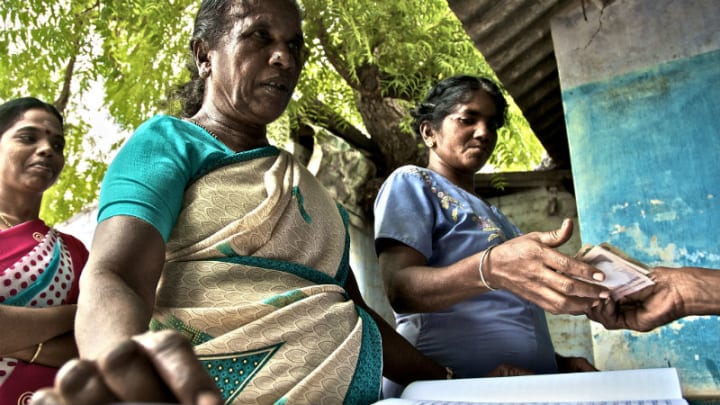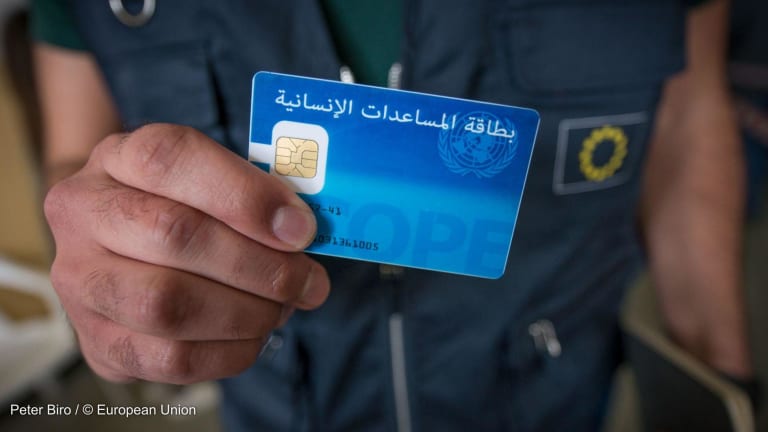
We know that gender inequalities mean that disasters and conflicts affect populations differently. As humanitarian actors, we must carefully consider the ways emergencies can exacerbate women’s and girls’ existing vulnerabilities and create new risks for all, including men and boys. If we do not, we risk delivering responses that are ineffective — or worse still, harmful.
We are only just beginning to understand the relationship between gender and cash transfer programming, or CTP.
There is a growing body of evidence on how CTP impacts household relationships and can be used to empower women and girls in development settings. Yet gender is rarely a part of our thinking in most cash-based humanitarian responses.
More on cash transfers:
► Opinion: Scaling cash transfers effectively is possible. Here’s a 7 step guide.
► IRC considers expanding cash transfers beyond goods to services
► As cash transfers gain favor, time for a rehaul of market assessments
The latest figures suggest that CTP makes up around 10 percent of humanitarian assistance — although the Global Public Policy Institute estimates that if we used cash whenever the evidence suggested it was the most appropriate, that figure would be closer to 40 percent. As the global push for cash gathers pace, urgent action is needed to ensure gender is systematically considered in all cash-based assistance in humanitarian action.
Recognizing this gap in understanding, CaLP, the Cash Learning Partnership, started to shine a spotlight on the issue late last year. In February, together with the Women’s Refugee Commission, Adeso, Norwegian Refugee Council, and Oxfam, we held a symposium in Nairobi, Kenya, during which some 20 research and practice papers were presented.
These papers form a starting point to build the evidence base on gender and cash.
Our work to date reveals a shocking shortfall in evidence and understanding. Currently, when looking at CTP from a gender perspective, interventions can be categorized as follows:
1. Interventions that are blind to the relationship between gender and cash-based assistance.
2. Cash-based assistance that is planned with a “do no harm” lens.
3. Cash-based assistance which fully integrates gender thinking.
4. Gender interventions which use cash-based assistance as a tool for change.
All too often, our cash responses fall into the first or second categories.
Targeting women is not enough
Even CTP responses that attempt to pay attention to gender considerations often fall short. When I ask about gender in the context of cash-based programs, the most frequent response I receive is, “we target the transfer to women.” This targeting is usually premised on the belief that women are responsible for the management of the household, that funds will be better managed by women, or simply the view that donors prefer it.
We need to be clear: The targeting of women does not, on its own, mean cash-based assistance is gender-responsive.
In many cases, the targeting of women is assumption based. As a result, important questions go unasked and there is a high risk of multiple unintended consequences. Targeting women as recipients of cash transfers may or may not exacerbate intra-household tensions, increase the risk of gender-based violence, reinforce gender stereotypes, or increase the workloads of women.
This complexity is demonstrated in a study conducted by Concern Worldwide in Malawi, where 38 percent of women have experienced some form of GBV. Researchers found that short-term emergency cash transfers temporarily improved joint decision-making at household level and did not result in increased GBV. However, they also found that when programs targeted the wife as the principal beneficiary for long-term and high-value cash and asset transfers, the risk of GBV, abandonment, and other negative impacts on the household increased.
Can cash transfers be empowering?
Women’s empowerment is a long-term outcome, that arises from a range of factors including societal norms, individual attitudes, access to resources, social networks, and legal structures. As a result, short-term cash transfers, on their own, are unlikely to be empowering.
But where they are part of longer-term interventions, such as in chronic situations or recovery contexts, cash transfers have the potential to have important empowering effects.
This potential is illustrated in a five-country study of the World Food Programme’s Food and Cash for Assets program, which explored the program’s potential to support women’s empowerment. Changes did occur when the FCFA program worked together with complementary actions, but the study concluded that although cash was an important element, it was not empowering on its own.
With so much complexity to navigate, support for practitioners is sorely needed. Responding to one such need, earlier in the year, WRC, along with Mercy Corps and the International Rescue Committee produced the “Toolkit for Optimizing Cash-Based Interventions for Protection from Gender-based Violence.” This toolkit provides valuable guidance for humanitarian actors. But there is much more to do.
How do we move forward?
One of the outcomes of the Nairobi symposium on Gender and Cash was the Agenda for Collective Action, six key actions which can be summarized as:
1. Commit to action.
2. Fill evidence gaps.
3. Ensure assessments consider gender equality.
4. Design programs for equality.
5. Systematically monitor and respond to protection issues.
6. Build capacity and work together better.
Driving this agenda forward will contribute to delivering on “Grand Bargain” and other cash commitments as outlined in CaLP’s global framework for action. We also believe it will support the call to action on protection from GBV in emergencies
CaLP has compiled a collection of research and practice papers to bring together some of the emerging evidence around gender- and cash-based assistance in humanitarian contexts, publishing this week and next month.
Cash transfers have the potential to bring enormous benefits, including greater choice and dignity to people affected by crises. But for these benefits to be felt by everyone, and for their full potential to be realized, we need to make sure that gender outcomes are at the forefront of our thinking. We have made the commitment: Now is the time to act.




